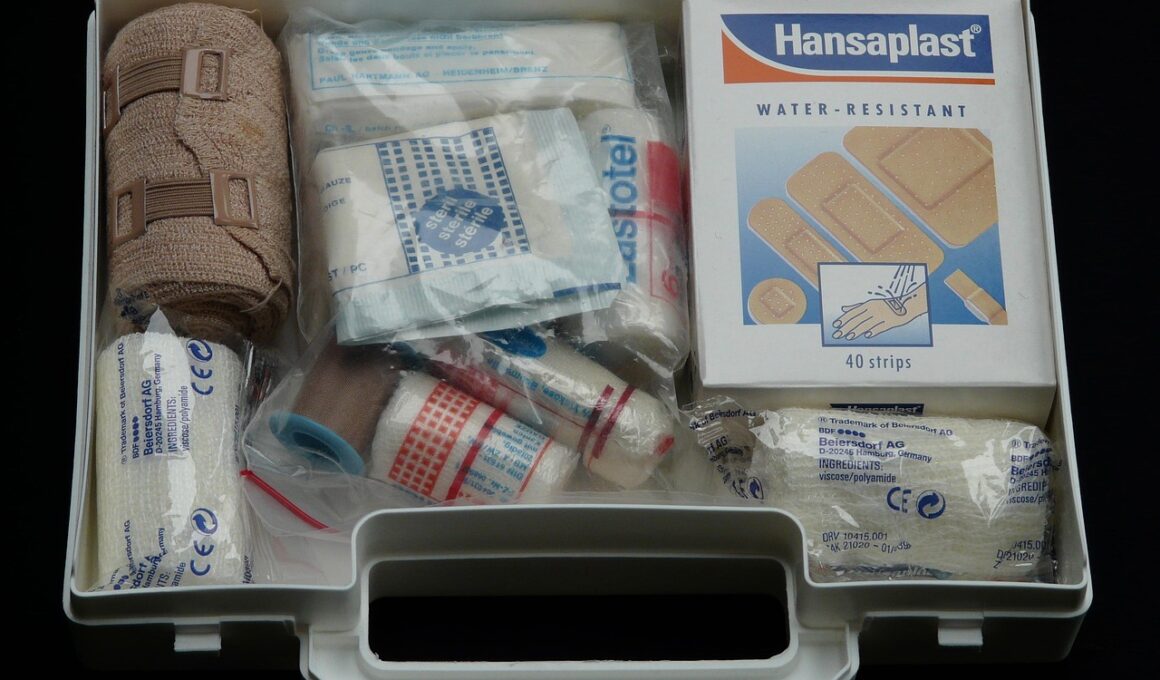Essential Tips for Using a Cat First Aid Manual Effectively
Having a cat first aid manual at your disposal is vital for any cat owner. Your feline companions, with their curious nature, can find themselves in precarious situations. Therefore, familiarizing yourself with essential first aid methods can help save a life. The first step is ensuring you have the latest edition of a trusted manual that covers various emergencies, from cuts to poisonings. Look for reputable sources such as veterinary clinics or established pet societies for recommendations. Within its pages, you’ll find detailed instructions and tips that can help during a crisis. Understanding the layout is critical; most manuals have an index that enables you to quickly find information on specific issues. Practice reading essential sections regularly to familiarize yourself with common scenarios. This will allow for quicker responses in emergencies, ensuring you remain calm and collected. Additionally, consider keeping the manual in a visible area where you take care of your cat. This way, it will be easily accessible when needed, providing peace of mind to know help is just an arm’s reach away.
When using a cat first aid manual, ensure that you have the necessary tools on hand. Prepare a dedicated first aid kit for your cat that includes items such as gauze, adhesive tape, antiseptic wipes, and tweezers. Familiarize yourself with the manual’s recommended supplies and ensure they are easily accessible. Having everything ready will reduce panic in case of an emergency. You may also want to include a pet thermometer, disposable gloves, and emergency contact numbers for your veterinarian. Furthermore, being well-acquainted with the manual’s terminology is essential for effective use. Terms used in veterinary first aid might differ from common language. Spend some time learning these terms by reviewing the glossary usually found within the manual. Additionally, if the manual features illustrations, study these visuals to enhance your understanding of the first aid procedures. Visual aids can be especially helpful during a stressful time. When an unfortunate incident occurs, having this knowledge will allow you to act efficiently. Remember to trust your instincts alongside the instructions provided in the emergency manual.
Understanding Common Cat Emergencies
Understanding the most common cat emergencies is crucial in effectively using a first aid manual. Cats may face scenarios like severe bleeding, choking, or burns. Learning how to respond to each of these situations will prepare you for an emergency. For example, in case of significant bleeding, it’s essential to apply pressure using a clean cloth. Knowing how to perform CPR if your cat is unresponsive should also be part of your essentials. These procedures are usually outlined clearly within a first aid manual. The better informed you are of these common emergencies, the quicker you can react when needed. Consider practicing first aid techniques on a stuffed animal or during a pet first aid course. Knowing how to execute these skills with confidence will help you avoid panic during real situations. Additionally, staying calm can positively influence your pet’s response to the incident. Another vital aspect includes understanding which issues require immediate veterinary attention. Not everything can be handled at home, and your manual will generally provide guidance on when to seek professional help.
In addition to identifying emergencies, being prepared for unexpected situations is equally important. Invest time into learning basic feline anatomy and common illnesses that could arise. The more you know about typical symptoms associated with ailments, the better you will navigate your first aid manual effectively. The manual can offer treatment instructions for various conditions based on visible signs. It is beneficial to keep a health diary for your cat, noting any peculiar behavior or health-related changes. This diary can provide valuable information to share with your vet during emergencies. It’s worth noting that each cat’s response to injuries may differ, necessitating a flexible approach to first aid techniques. The effectiveness of certain first aid strategies may vary as well, depending on your cat’s age or weight. Pampering your cat in times of stress can help ease its anxieties. Practice gentleness in handling, especially when you’re trying to apply bandages or medications. Whenever possible, wait until your cat is calm before attempting anything that may cause discomfort or distress. This method will often yield better results.
The Importance of Post-Care Follow-Up
After providing first aid, follow-up care is essential to ensure your cat’s recovery. Always keep an eye on your cat for any changes in health after an incident requiring first aid. Most manuals will include guidelines on what symptoms to watch out for post-treatment. If your cat exhibits any unusual behavior or signs of infection, seek veterinary advice immediately. Your first aid manual may also guide feeding and administering medications during recovery. Understanding the correct dosages and schedules is vital to prevent setbacks. Keeping your environment clean is crucial as well; limit exposure to irritants to promote quicker healing. This aspect often involves keeping your cat indoors until full recovery. In cases of surgery or extensive injuries, you may need to restrict activity. Always read the care instructions thoroughly in your manual and adhere to the recommendations provided by your veterinarian. Being compliant can significantly impact your cat’s healing process and overall well-being. Should you have questions, never hesitate to contact your veterinarian. They can assist with additional guidance alongside your first aid manual.
Enlisting help during emergencies can increase your ability to use a first aid manual effectively. Maintaining calm and composure is crucial, but having an extra set of hands can ease the process. Practice delegating tasks to others when necessary. For example, one person can read the manual while another tends to the cat, preventing delays in treatment. It helps to discuss roles beforehand with family members, so everyone knows what to do during a crisis. Regularly practicing this coordination will build confidence and improve your team’s effectiveness. Moreover, if you frequently bring your cat to various locations, such as parks or playdates, consider having a portable first aid manual. This way, you’ll always be prepared wherever you go. Checklists for prepared kits can assist in confirming you have the right supplies, minimizing worry. It’s vital to store these manuals where they’ll remain safe but easily accessible when emergencies arise. A well-consolidated kit not only expands preparedness but enhances your ability to follow procedures laid out in the manual. Remember, the faster you stay organized, the better you can help your cat.
Conclusion: Always Stay Informed
Staying informed should be your priority as a cat owner. Reviewing and updating your first aid knowledge is essential. Regularly practice skills outlined in the manual along with any new techniques you might discover. Consider attending workshops or online courses, which will provide practical insight and confidence in utilizing your manual. Some organizations offer insights into training pets in first aid response, making your care efforts more effective. Familiarize yourself with local pet emergency services and hospitals; knowledge will empower you during critical moments. Additionally, beings involved in community forums and groups can share experiences, reinforcing information. Conversations with experienced cat owners can lead you to discover invaluable tips and motivations. Awareness of your kitty’s behavior, inclinations, or medical history will assist not just in emergencies but in regular healthcare. Always reflect on personalized needs for your cat, adapting your first aid protocol as you learn more. The more prepared you are today, the better you can ensure a healthy tomorrow for your feline friend. Educating yourself and being proactive can spell the difference in life-and-death situations for your beloved pet.


